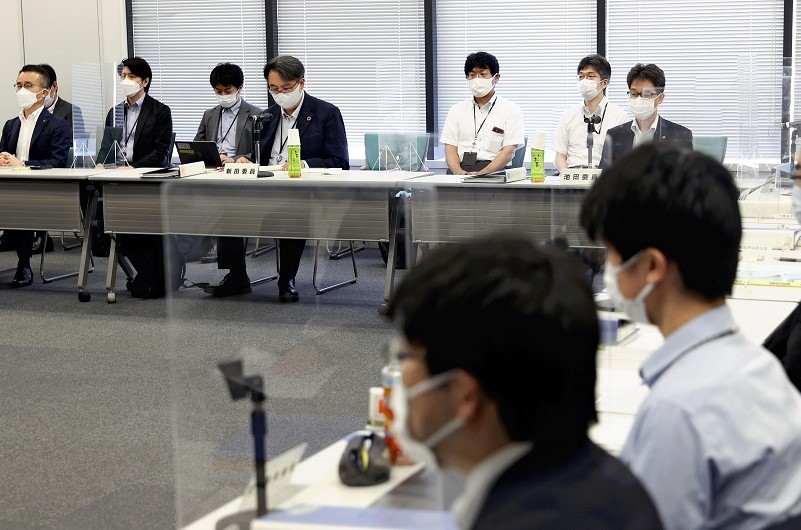Govt panel submits proposal for ¥31 minimum wage increase

A government subcommittee discusses a proposal to increase minimum wages in Chiyoda Ward, Tokyo, on Monday.
18:03 JST, August 2, 2022
A government panel submitted a proposal to Health, Labor and Welfare Minister Shigeyuki Goto Tuesday to raise the minimum hourly wage by up to ¥31 this year, which would lift the national average to ¥961.
It is the largest increase recommended by the Central Minimum Wages Council, exceeding the previous record of ¥28 proposed in fiscal 2021.
The council’s proposal for a 3.3% rise also represents a record high, surpassing the previous record of a 3.1% recommended increase in fiscal 2016.
The minimum wage is set annually by each prefecture based on the guidelines set by the council, which includes labor and management representatives, and experts. The new minimum wage is usually adopted in October and applies to all workers regardless of employment status. Employers who violate it are subject to a fine of up to ¥500,000 under the Minimum Wage Law.
If minimum wages are raised by each prefecture in line with the council’s proposal, the minimum hourly wage in Osaka Prefecture will reach the ¥1,000 level for the first time. The minimum wage in Tokyo and Kanagawa Prefecture is currently more than ¥1,000.
The average minimum wage has increased by about 3% every year in line with the government policy since fiscal 2016, apart from fiscal 2020 when it increased just 0.1% due to the economic fallout from the COVID-19 pandemic.
The subcommittee of the council divided the prefectures into four groups based on the economic circumstances and prices in each region: group A, comprising six prefectures including Tokyo, Kanagawa and Osaka; B, 11 prefectures including Ibaraki, Shizuoka and Hyogo; C, 14 prefectures including Hokkaido, Tokushima and Fukuoka; and D, 16 prefectures including Aomori, Ehime and Kagoshima.
The panel recommended raising the minimum wage by ¥31 in groups A and B, and by ¥30 in groups C and D.
Against a backdrop of surging prices following Russia’s invasion of Ukraine and the sharp depreciation of the yen, labor and management sides agreed on the decision to raise minimum wages this fiscal year. But while labor representatives sought a drastic increase, management wanted the hike to be held down, citing suppressed corporate earnings due to rising raw material costs.
According to the Health, Labor and Welfare Ministry and others, experts proposed 3.3% as the yardstick at the council’s fifth meeting on Monday.
“A single-person household cannot make ends meet unless the minimum hourly wage is above ¥950, even in the prefecture with the lowest minimum wage,” the labor side said. However, the management side argued that sharp increases in the minimum wage “did not adequately take into account the business conditions of small and midsize enterprises.”
Discussions continued until late into the night on Monday.
Akio Mimura, chairman of the Japan Chamber of Commerce and Industry, comprising small and midsize enterprises nationwide, said Tuesday sincere discussions were held at the meeting.
However, he strongly urged the government to create an environment in which small and midsize companies can raise wages voluntarily “by securing budgets for various measures to support firms striving to improve productivity.”
Regarding the ¥31 yardstick, Mimura said, “It’s difficult to say that it adequately reflects the current situation, regarding the ability of small and mid-size companies to pay [such wages].”
“I’m aware that the minimum wage increase will be costly [for small and midsize enterprises],” Finance Minister Shunichi Suzuki said Tuesday. “We need to pay close attention to the specific impact on the business performance of small, midsize and micro enterprises,” he said at a press conference.
Economy, Trade and Industry Minister Koichi Hagiuda said, “We want to offer comprehensive support so that companies can raise wages,” referring to past government efforts, including subsidies for small and midsize businesses to help them improve productivity.







